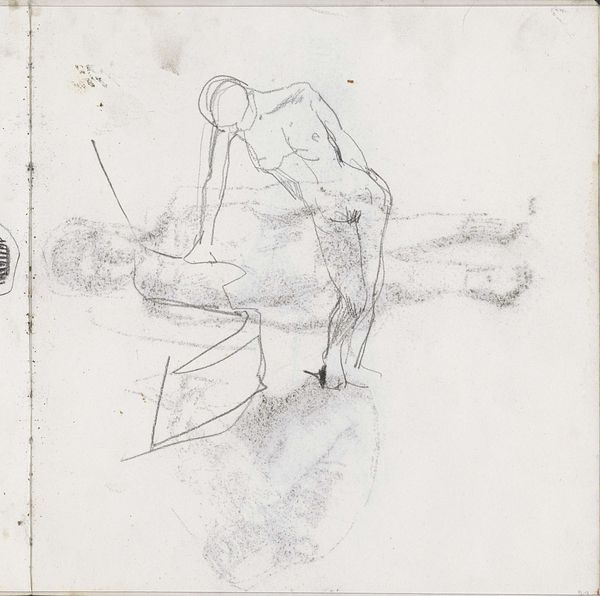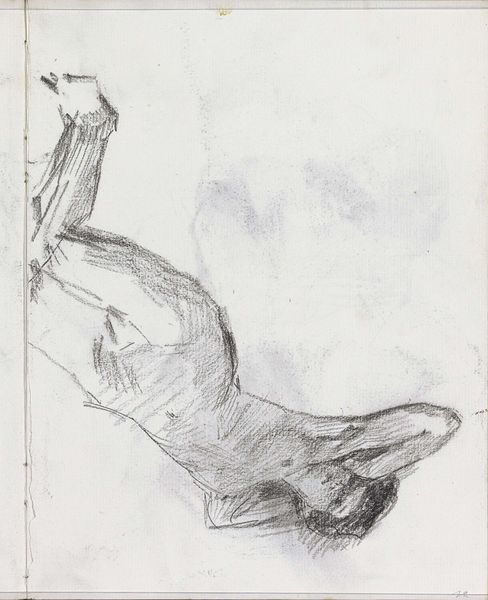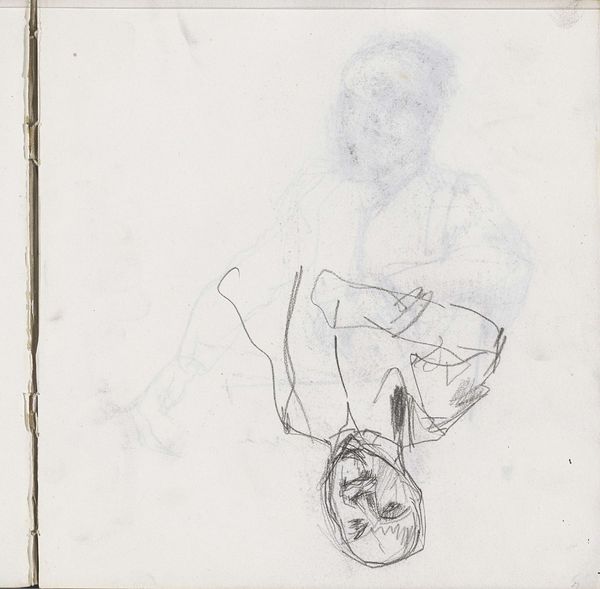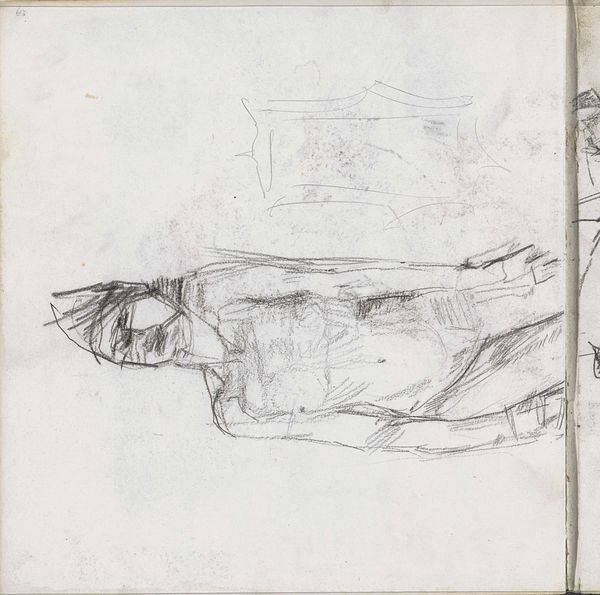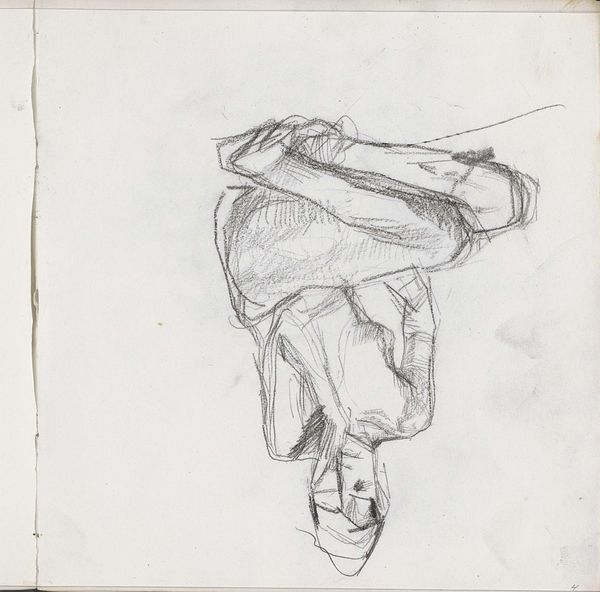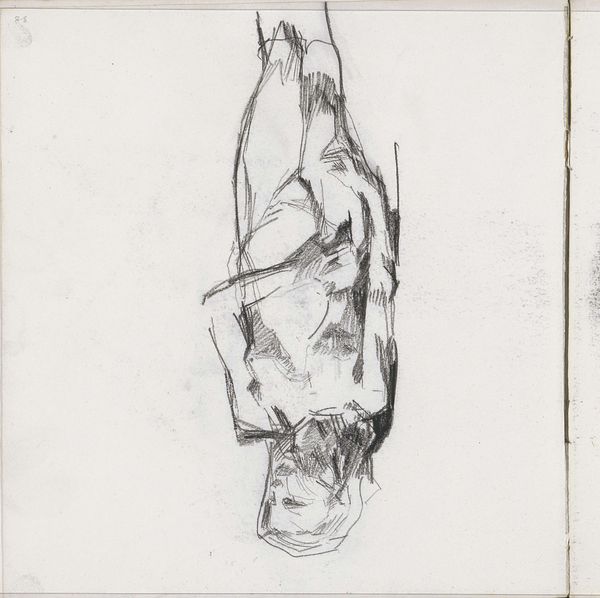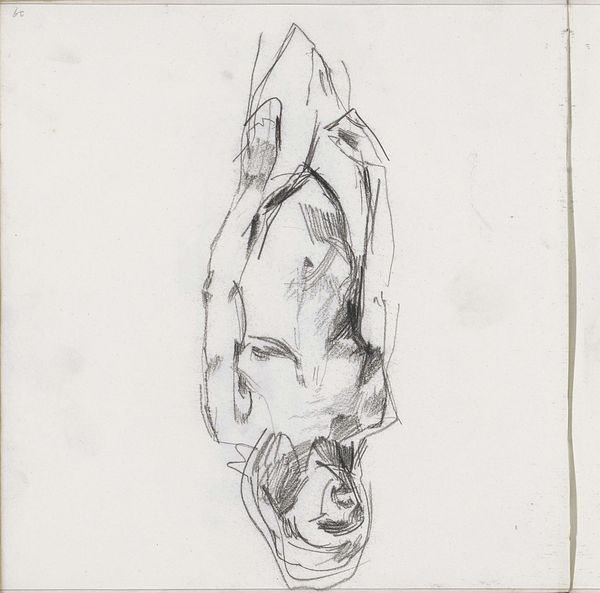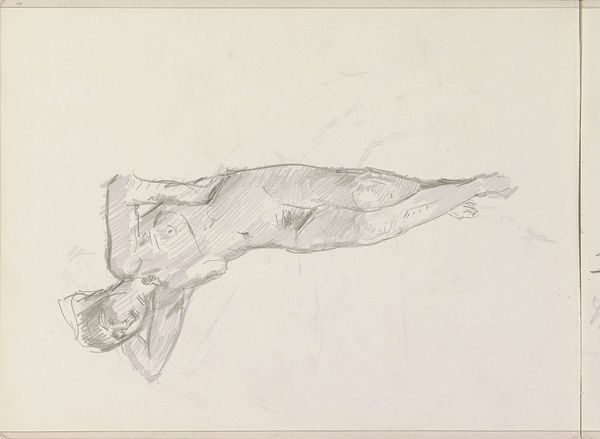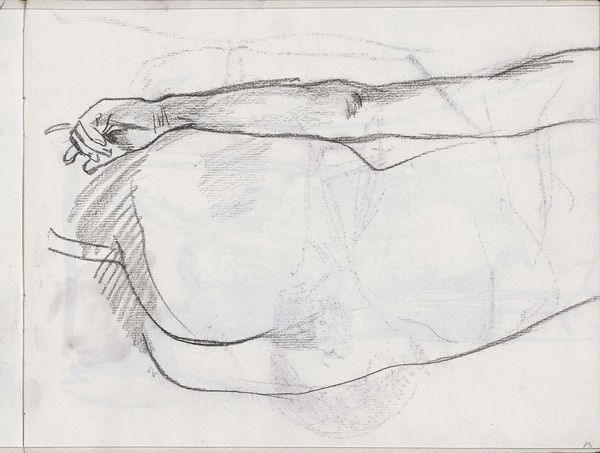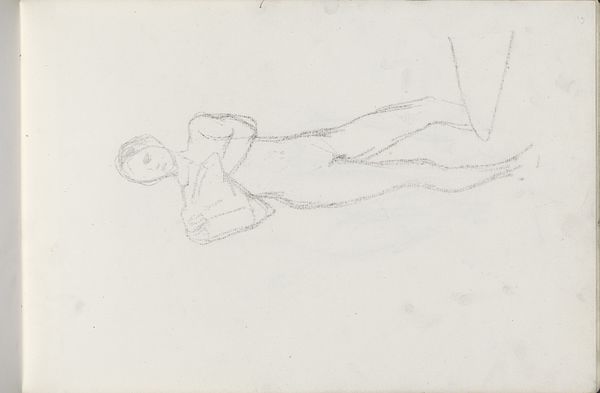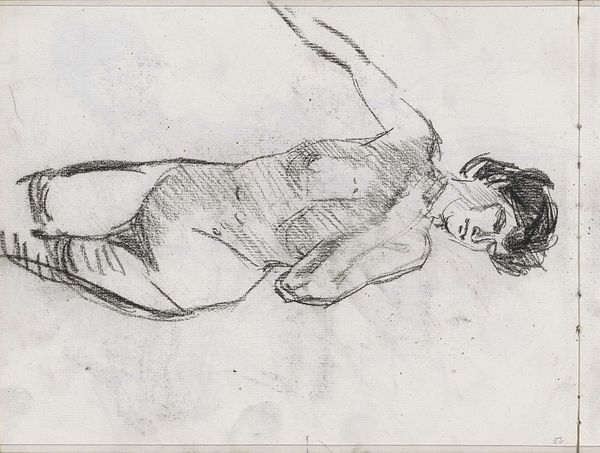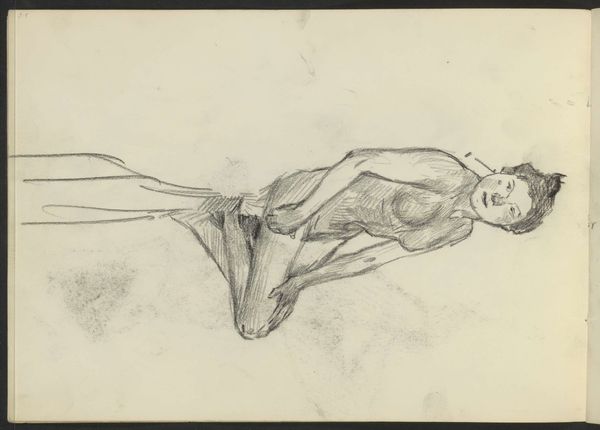
drawing, pencil
#
portrait
#
drawing
#
amateur sketch
#
light pencil work
#
pencil sketch
#
incomplete sketchy
#
figuration
#
personal sketchbook
#
idea generation sketch
#
detailed observational sketch
#
pencil
#
sketchbook drawing
#
nude
#
sketchbook art
#
realism
#
initial sketch
Copyright: Rijks Museum: Open Domain
Curator: Welcome. Here we have Isaac Israels' "Reclining Female Nude," a pencil drawing dating from approximately 1875 to 1934, part of the Rijksmuseum collection. Editor: It's interesting how the swiftness of the lines gives the figure a feeling of fleeting existence. It has a spontaneous, almost ethereal quality, a captured moment of intimacy but a cold tone as well. Curator: Note the double image – there’s a ghostly echo of the same pose layered behind the main figure. To me, it speaks of vulnerability and the transient nature of beauty, like a memory fading into the background. The recurring motif perhaps suggesting that Israels was preoccupied with this pose and was constantly refining his understanding of it. Editor: It seems more indicative of an unfinished exploration of form and space. Pencil sketches often were an exercise for artists to build skills and understand production. You can see in this drawing how he focuses on planes, angles and weight. Did he present his sketchbooks or only finished works? Was this a private activity for the artist? Curator: It's hard to know for sure Israels' intention with this drawing. It certainly gives the impression of being from a sketchbook, something private. But within that intimacy, you can almost feel echoes of classical sculpture, repurposed through the lens of a modern artist’s eye. The nude is not simply a body, but a vessel holding layers of history, perception, and even, dare I say, societal expectation. Editor: True. And I notice the paper itself seems to have age and wear. Was it common for artists in the late 19th century to use relatively inexpensive material for such studies? Did the access of such materials liberate creation of images? Curator: The sketch suggests a directness and immediacy born from the intimacy of the act of drawing itself. Pencil in hand, capturing an impulse...It serves as a poignant reminder of time's passage, not just for the depicted subject, but for the artwork and its viewers as well. Editor: Absolutely. This close examination reveals how an object seemingly devoid of frills contains deep ties to an artist's craft, their means, their access, and finally, to the conditions of our own understanding of art itself.
Comments
No comments
Be the first to comment and join the conversation on the ultimate creative platform.
